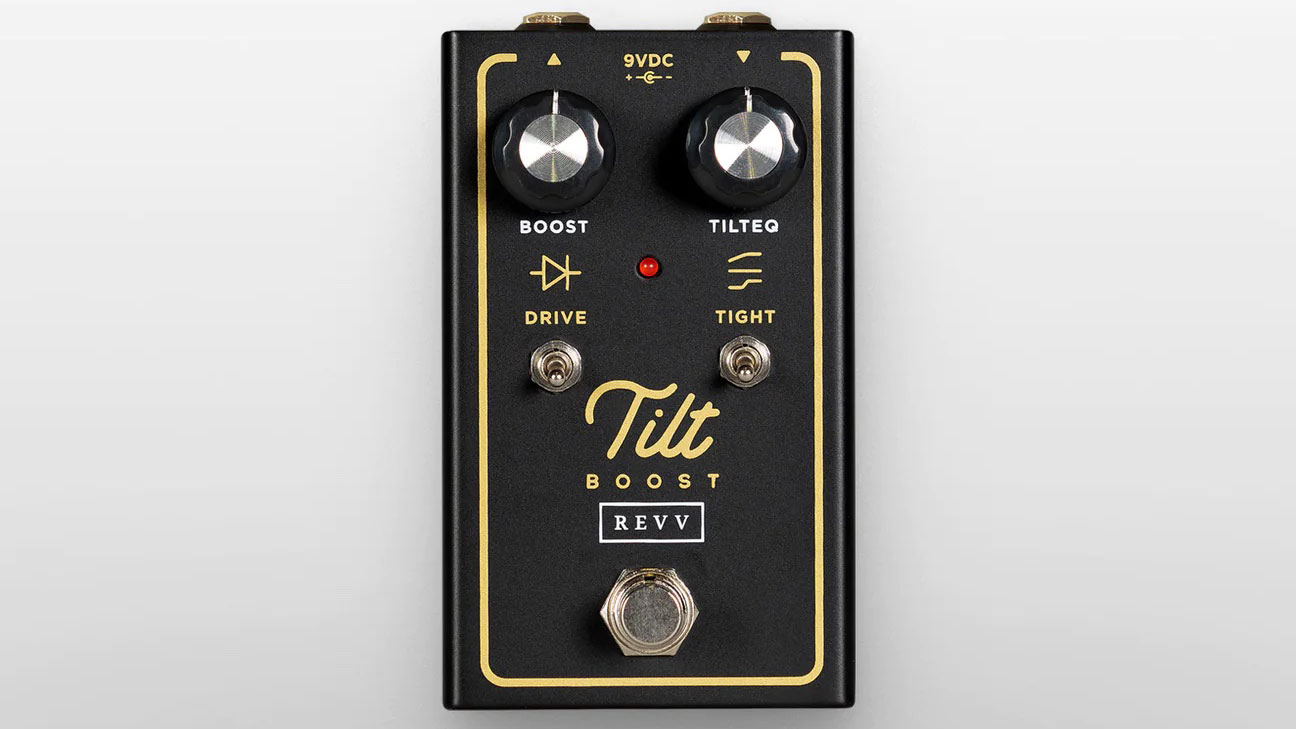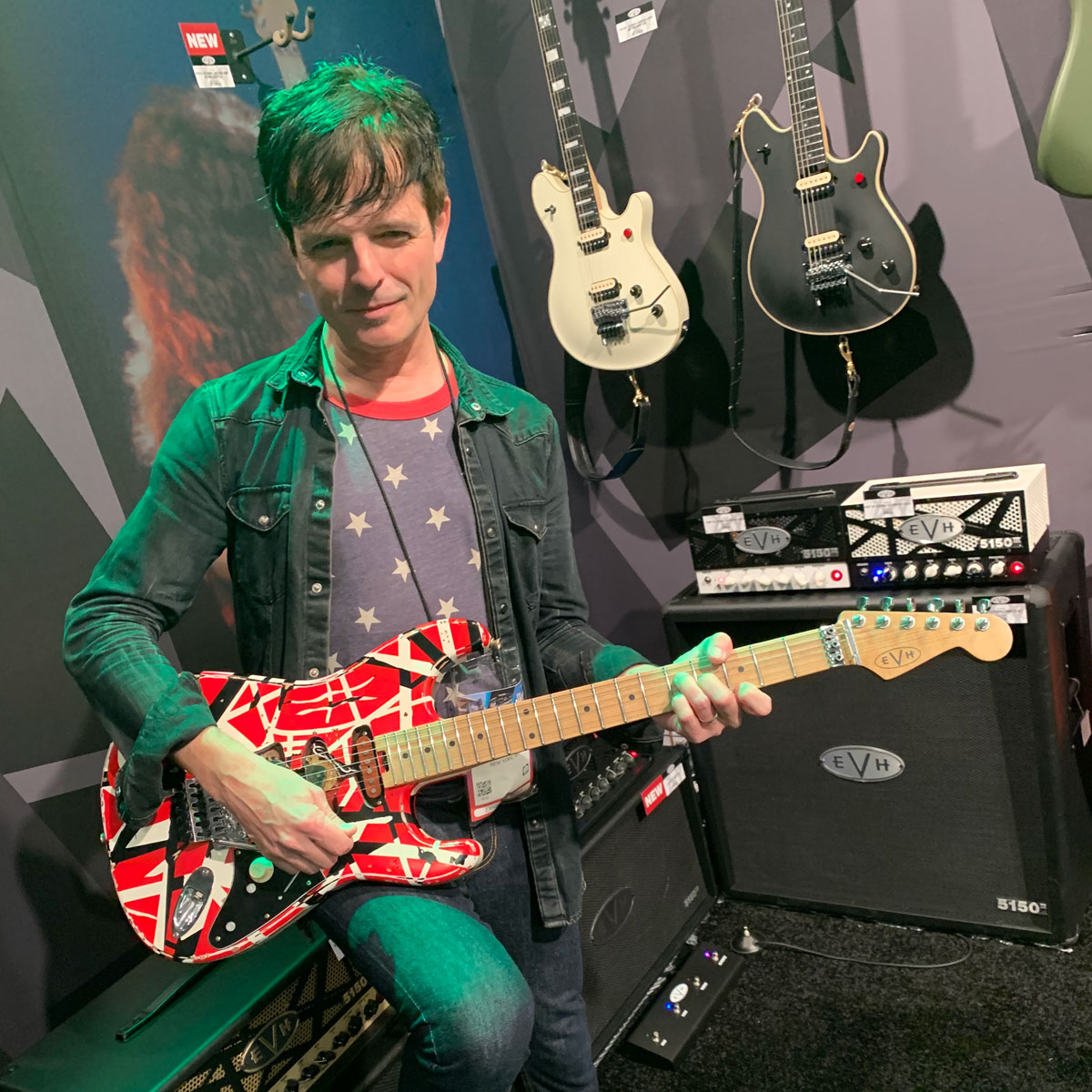Guitar World Verdict
The Revv Amplification Tilt Boost is essential for incrementally sculpting your boosted tones with clarity or as an “always-on” tone-shaping pedal that enhances any rig with touch-sensitivity and punch.
Pros
- +
Up to 20dB of transparent, clean boost.
- +
Intuitive flexibility in shaping bass and treble response.
- +
Organic medium-drive character in drive settings.
- +
Compact design.
Cons
- -
Boost can sound squashed in extreme settings.
You can trust Guitar World
Not all boost pedals are created equal. Of course, they’re great for boosting volume to be heard, but some can do more than just increase your signal. For example, some boosts can start clipping into juiced-up drive if you turn them up enough, while others can be tailored to enhance your overall tone with onboard EQ.
What if I told you Revv Amplification’s Tilt Boost can do all that and more? Session guitarist extraordinaire and influencer Shawn Tubbs stumbled into something good when he partnered with Revv Amplification to release his signature Shawn Tubbs Tilt Overdrive pedal, which featured dual footswitchable overdrive and boost.
What happened next was seemingly unexpected; Tubbs discovered that many players who had been using the pedal had become enamored with its boost side, with some foregoing the overdrive altogether and having the boost always on because of its tone-shaping abilities.
Well, if all you need is boost and so much more, Revv Amplification has got you covered with the Tilt Boost, which is essentially the extracted boost portion of the Shawn Tubbs Tilt Overdrive, but with additional tone-shaping capabilities that push it far beyond other mere boosts.

Much like the Shawn Tubbs Tilt Overdrive, the Tilt Boost’s simplified control set is divided between its boost and Tilt EQ functions. On the left side, the Boost control adjusts output level and the two-position drive switch activates boost (up to 20dB of clean boost) or engages touch-sensitive clipping (fat, medium-gain overdrive).
For the right side, the Tilt EQ control simultaneously attenuates bass and treble frequencies by adding more fullness and low-end clarity while cutting high end as you move it clockwise, and introducing chime and brightness if you dial it counterclockwise.
The three-position Tight switch is a clever addition for swiftly attenuating the low-end content independent of the Tilt EQ control with a flick of the switch.
All the latest guitar news, interviews, lessons, reviews, deals and more, direct to your inbox!
In other words, set the Tilt EQ where it sounds best and, depending on your pick attack and amp tone, you have three settings to refine bass response (if you need it) without changing your tone stack.
The pedal is true-bypass, featuring top-mounted ¼-inch jacks, and operates with a 9VDC center negative external pedalboard power supply only.
Shawn Tubbs describes the Tilt Boost as a means to “wake up” your existing rig, and I think that’s an apt characterization for this pedal. It’s a wonderfully refined boost pedal that, once engaged, makes your rig more “alive” and present.
Needless to say, where you place it in your signal chain makes a noticeable difference, because its utility can be applied in several ways – as a true tone-shaper for your sound, to push an amp, or as a transparent, clean boost.
As an “always-on” pedal, the Tilt Boost adds analog liveliness to your rig without altering your base tone – even if you’re using amp modelers. I found it can also kick up some missing frequencies or tighten bass response where you need it, and most audibly, accentuate your pick attack. If you’re looking for a little more edge from your amplifier, engaging the Drive switch and pushing the boost introduces a harmonically rich overdrive for fattening up leads.
For me, I use boost pedals to make myself heard by increasing volume, and I’ve always found that most boost pedals tend to introduce a strident high-end once you engage them. What’s great is the Tilt Boost allows you to tailor that boosted volume with its Tilt EQ control that tames unwanted frequencies and smooths out any harshness so that your solo tones don’t end up sounding piercing.
Specs
- PRICE: $169 / £179
- TYPE: Tone-shaping Boost pedal
- FEATURES: True-bypass
- CONTROLS: Boost & Tilt EQ controls; 3-position Tight switch & 2-position Drive switch
- POWER: All-analog design powered by 9V 18mA (center negative external supply only)
- CONNECTIONS: Top jacks & silent relay switching
- CHASSIS: Charcoal black powder-coated matte metallic finish
- DIMENSIONS: L- 4.375", W- 2.625", H- 2"
- WEIGHT: 0.7lbs
- ORIGIN: Made in Canada; 2-year limited warranty upon registration
- CONTACT: Revv Amplification
Paul Riario has been the tech/gear editor and online video presence for Guitar World for over 25 years. Paul is one of the few gear editors who has actually played and owned nearly all the original gear that most guitarists wax poetically about, and has survived this long by knowing every useless musical tidbit of classic rock, new wave, hair metal, grunge, and alternative genres. When Paul is not riding his road bike at any given moment, he remains a working musician, playing in two bands called SuperTrans Am and Radio Nashville.


